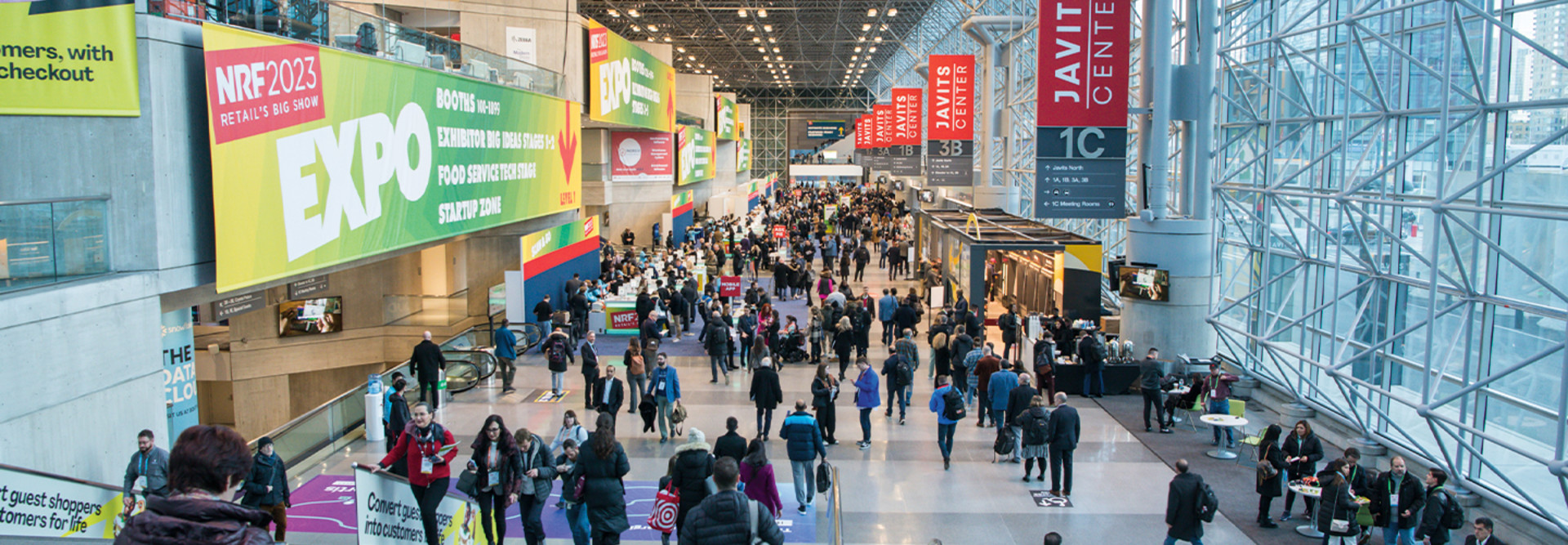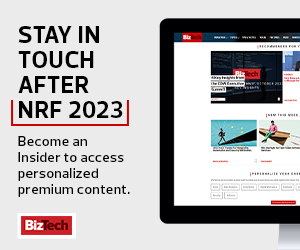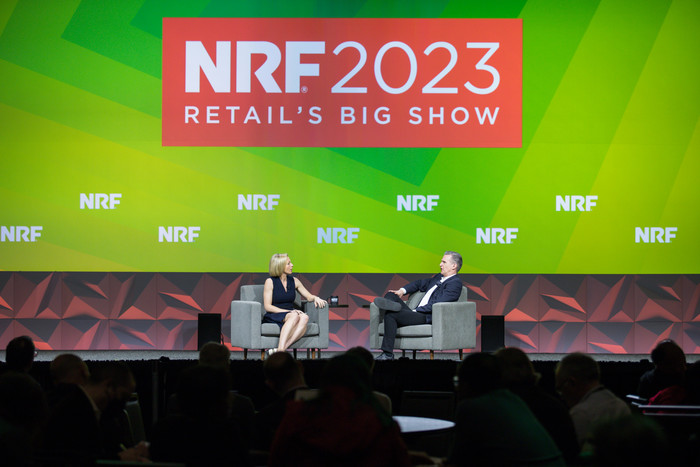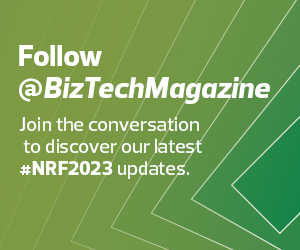At NRF 2023: Retail’s Big Show, attendees gathered in person to hear from the most influential IT leaders in the industry. The conference was packed with educational programming, keynote sessions and live demos. As IT leaders look ahead, retailers are making an extra push toward digital transformation. Loss prevention strategies and in-store security measures are also priorities.
Brands including Intel, Microsoft, Cisco, Google illustrated the ways they’re leveraging analytics to improve modern inventory management and respond to supply chain delays. Lowe’s, Toshiba and Walgreens noted that they are using artificial intelligence (AI) and radio-frequency identification (RFID) technology to reduce theft and improve frictionless checkout. Retailers including Macy’s, Neiman Marcus and Louis Vuitton Moët Hennessy revealed the ways they’re creating lasting relationships with customers through in-store experiences.
According to Andy Szanger, director of strategic industries at CDW, “the retailers that are going to be the most successful this year are those that can provide digital innovation combined with a truly exceptional in-store experience to meet and exceed their customers’ needs and demands.”
Here are some core takeaways IT leaders should know.
Click the banner below to receive exclusive industry content when you register as an Insider.
Retailers Push Toward Digital Transformation
Retailers are primarily focused on digital transformation. From loss prevention to supply chain management, RFID gives retailers better visibility into their supply chains and product inventory.
“RFID helps us get to 98 percent real-time accuracy,” said Bill Toney, vice president of global RFID market development, Retail at Avery Dennison.
RFID’s sophisticated AI and sensor technology can tag and track products as they move from warehouses to stores. This enhancement also offers customers a consistent experience in-store, online and on social media, noted Fast Retailing CIO Takahiro Tambara. “This is huge because it means people can move in space as fast as they do online,” he said. Digitizing lifecycle of any product is a major step toward digital transformation.
Click below to watch BizTech’s NRF recap with Andy Szanger, Director of Strategic Industries, CDW
Retailers Consider Customer Pain Points
Ray Marciano, retail growth and commerce lead at Accenture, said that investing in technology is about targeted problem-solving. “We’ve found we are more effective if we start by identifying a pain point first and then look for technology that will address that problem. It’s like reverse engineering.” Two major retailer pain points experts identified at NRF were frictionless checkout and loss prevention.
RFID and Frictionless Checkout
Retailers are also prioritizing a seamless, fast checkout experience. Visual AI, RFID systems, self-checkout kiosks, mobile point-of-sale machines, computer vision systems and robotic automated store environments are a few examples of the tech that’s making a difference.
FIND OUT: Learn how retailers are improving the checkout experience.
AI and Loss Prevention
Inventory loss costs companies nearly $100 billion this past year, according to the NRF’s 2022 Retail Security Survey. But a variety of AI-based solutions, including video analytics at the point of sale or self-checkout, RFID heat maps, cash automation technology, and autonomous security robots are helping. With predictive analytics, AI can work to prevent losses before they happen. DIG DEEPER: Explore how retailers are using AI to prevent inventory loss.
DIG DEEPER: Explore how retailers are using AI to prevent inventory loss.
Jeff Gennette, Chairman and CEO of Macy's and Caroline Hyde, TV Anchor of Bloomberg Talk Digital Transformation
Why Retail Innovations Should Align with Brand Identity
One of the most compelling takeaways from NRF this year was that innovation in retail should be intentional. There are always new advancements on the market but not all are suitable for every business. Finding the “right-fit technology” and “customizing it to your customer needs will help retailers be successful,” said Tambara.
DISCOVER: See why retailers are using predictive analytics to forecast success.
Antoine Tessier, CTO of LVMH Americas, sees tech as a language to communicate with customers. It’s about “solidifying the brand’s identity as one of longevity, quality and luxury,” he said.
“As a customer, I’m going to the store because I want to discover something new. But it should still fit with the brand style,” he said. His biggest investments so far have been in loss prevention security and an exclusive line of NFT Tiffany pendants. Tessier saw an immediate ROI from the line of pendants. “We curated and thought about our customers, our value proposition, the experience,” he said.
The takeaway? “For every tech innovation you invest in, you must have a reason. If it’s trending, that’s not enough. It should be intentional and strategic,” said Tessier.
During a closing session, Michael Colaneri, vice president of retail, restaurant, hospitality, and industry solutions at AT&T Business, said there’s a tendency in this industry to push to the next level. “Next-gen analytics, next-level customer experience, advanced security: As retailers, we are always pushing toward the future, but how do we get there fast and deliver well?” he said.
The answer, discussed in a panel on unified commerce and customer experience, stems from the importance of strategizing. Retailers must make time to think about their next investments and tech solutions. Tessier agreed. “IT leaders can even strategize by way of testing out a concept and learning from it,” he said.
“No brand can digitally transform in one day, so these efforts to test are all additive,” Tessier said. Experts also said that making space for strategic experimentation can produce richer insights.
Keep this page bookmarked for articles from the event, and follow us on Twitter at @BizTechMagazine and the official conference Twitter feed, @NRFnews.
















